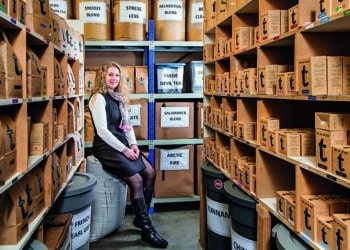Pablo & Rusty’s CEO Abdullah Ramay dives into the results of his company’s Australian survey on coffee pricing.
For years, café owners have navigated pricing decisions based on gut feel, local competition, and the ever present fear of scaring away loyal customers. But what do Australian coffee drinkers truly believe is a fair price? And what really drives their decision to choose one café over another?
To answer these questions we conducted a comprehensive national study. We surveyed more than 850 Australians (resulting in a final, statistically significant sample of 789 coffee drinkers) to get a clear picture of the modern coffee consumer. Using scientifically validated tools like the Van Westendorp Price Sensitivity Meter, our research carries a 95 per cent confidence level with a margin of error of just ±3.5%, making it one of the most robust snapshots of the Australian coffee market to date.
The findings are fascinating, revealing a consumer base that is both price conscious yet quality driven, presenting clear opportunities for cafés that know how to communicate value.
The price of a delicious cup: What are Australians willing to pay?
Let’s get straight to the number one question: how much is too much? Our pricing study identified clear psychological price ceilings for Australia’s favourite brew.
For a small hot coffee (like a flat white or latte), the upper limit of what most consumers will easily tolerate is $5.18. For a large hot coffee, that ceiling rises to $6.20.
While these are the absolute upper limits before you see significant customer drop-off, the data also shows there’s room to move. A remarkable 70 per cent of customers are happy to pay up to $5.50 for a small coffee, and a similar 70 per cent are willing to pay up to $6.20 for a large. This confirms that while consumers may prefer a lower price point, a majority of the market will accept higher prices when they see clear value.
When it comes to add-ons like alternate milks or an extra shot, the story is clear. While some outliers are willing to pay much more, the firm median price consumers are willing to pay is $1.00. This has become the established and expected cost for customising an order.
What this means for specialty cafés: Your pricing is a delicate balance. This data gives you permission to price confidently within these ranges, especially if you deliver on quality. However, it also serves as a warning: exceeding these upper thresholds, even for high-quality coffee, will alienate a significant portion of the market. Use the optimal prices as your guide and justify any premium with exceptional quality and service.

Perception vs. reality: The power of price anchoring & education
One of the most significant findings from our study is the gap between what consumers assume about coffee prices and how a simple piece of information can dramatically alter their willingness to pay.
First, we found that most Australians don’t realise how affordable their coffee is on a global scale. When asked to guess the average price of a small coffee in major international cities, the overwhelming majority of responses clustered between $4.00 and $5.50, essentially, what they pay locally.
We then ran an experiment. We told them: “For your information: In some major international cities… a small regular coffee can cost between $9.00 and $10.00 AUD, and in some cases, up to $15.00 AUD.”
The effect was immediate and powerful. After seeing this single sentence, the perceived optimal price for a small coffee jumped by over 37%, from $4.88 to $6.71. Their entire acceptable price range shifted upwards.
What this means for specialty cafés: Consumer price sensitivity isn’t fixed; it’s shaped by context. This finding proves what we have believed for three years: that we have the power to reframe the conversation around value and not accept this global value gap. By educating your customers, whether it’s about the cost of high-quality green beans and running a specialty café, the investment in equipment, or how your prices compare globally, you can justify a premium price and help them appreciate the true value of the coffee you serve.
Beyond the price tag: What customers truly value
While price is important, it’s far from the only factor. We asked consumers to rank what matters most when choosing a café. Beyond the price of a cup, our survey reveals that Australians look for a range of elements for their overall coffee experience. This shows that consumers take a holistic view of value.
Taste and the overall quality of the coffee was rated as “very” or “extremely important” by nearly 80 per cent of respondents, making it the undisputed king of café drivers. This was followed by price/value, cleanliness, and consistency.
This directly connects to the growing awareness around “specialty coffee.” Our research found that 59 per cent of Australian coffee drinkers have heard the term “specialty coffee.” Crucially, their understanding isn’t based on abstract industry terms; they associate it with tangible benefits like “high-quality beans” and “unique flavour profiles.” This suggests that customers who seek out “specialty” are really just seeking quality and taste and they are likely willing to pay a premium for it when they can taste the difference and feel the premium experience.
What this means for specialty cafés: This is your core value proposition. In a competitive market, never compromise on the taste of your core product and the experience you provide. Your customers notice. Investing in high quality beans, consistent brewing, and skilled baristas is not a cost centre, it is the single most important driver of customer choice and loyalty. Remember, $2 coffee already exists. Cutting corners on quality to save a few cents is the fastest way to lose your most valuable customers.

The café to home connection: A supplementary channel, not a threat
A common fear in the industry is that the rise of high end home espresso machines will cannibalise café sales. Our data suggests the opposite: the two channels are supplementary, and a great café experience is the best driver for at home quality. Customers that drink delicious coffee at home will only go to the best cafés.
The modern coffee drinker consumes coffee everywhere. While home is a hub, the café remains a vital and frequent ritual. The key insight is that when customer experience delicious coffee at a café they try to replicate the same at home. When asked where they buy their beans from, 31 per cent of home brewers buy their beans directly from a café. Coffee at home and coffee at café are not the same experience and hence not substitutes for the majority of consumers.
This shows that the café is not just a place for delicious coffee; it’s a showcase for coffee and hospitality experience and the heart of the lifestyle and feeling of normalcy for many people. A customer who falls in love with your coffee is a customer who will want to take it home. Taste is what customers crave, and a great café serves as the ultimate expression, leading to a positive feedback loop where delicious coffee in the café leads to a desire for delicious coffee at home.
What this means for specialty cafés: Embrace your role as an experience hub and an educator. View your take home bean sales not as competition for your beverage sales, but as a crucial, high-margin revenue stream and a powerful tool for building brand loyalty. Every bag of beans you sell is a brand ambassador in your customer’s kitchen, reinforcing their connection to your café every single morning.
The rise of the alternatives: What else are they drinking?
Looking at other beverages, the most popular alternatives are black/green tea (45 per cent), and hot chocolate (33 per cent). More niche, café centric drinks like chai (18 per cent) and matcha (18 per cent) also have a dedicated following. Matcha has quickly grown to rival chai now.
What this means for specialty cafés: Diversify your high quality offerings. Don’t let your tea or chocolate be an afterthought. Applying the same commitment to quality and taste for these alternatives as you do for your coffee can capture a greater share of your customers’ spending and make your café the go to destination for groups with diverse tastes. The experience of any product in your café should be excellent and cohesive. Embracing high quality hot chocolate, matcha and chai, in particular, caters to a growing and discerning market segment.
Conclusion
This groundbreaking research shows that Australian coffee culture is unique. The customers are willing to invest in a premium experience and delicious coffee. Yet, a lot more needs to be done around customer education to close the global value gap. This presents an opportunity for the Australian café industry to challenge its assumptions around what the customer values and how much they are willing to pay.
Detailed results and data from the study are currently available exclusively to Pablo & Rusty’s customers. However, more results and insights will be shared publicly in the coming months for the benefit of the wider coffee industry.

Article written by Abdullah Ramay, CEO of Pablo & Rusty’s Coffee Roasters. Abdullah is a purpose-driven leader and technology enthusiast, uniting business strategy, leadership, and innovation to create meaningful impact in the specialty coffee industry.
Article originally published on the Pablo & Rusty’s website. For more information, click here.




